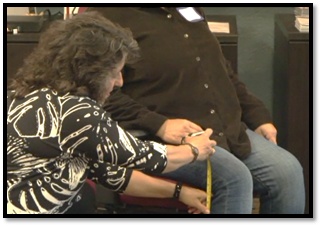
Selecting ergonomic chairs for a diverse workforce is not easy to do. I find most employers, including purchasing managers or in-house ergonomics support tasked with selecting and purchasing ergonomic chairs often choose poorly. Primarily because they don't utilize good criteria to select from or know where to find the criteria. Many select chairs based on the lowest price which is a recipe for failure! With sitting time increasing for most of us to 7 or more hours a day in the office, investing in comfortable, supportive ergonomic chairs as a capital asset is a must!
The Business and Institutional Furniture Manufacturers Association (BIFMA) put out the BIFMA G1-2013, "Ergonomic Guidelines for Furniture Used in Office Work Space Designed for Computer Use". This guide is updated from the 2002 recommendations and provides guidance in specifying chair and other furniture selection criteria. As a result, chair manufacturers are encouraged to design products to meet the 2013 standard. In the meantime, employers with older chairs will not meet the new criteria resulting in a less than stellar fit of their workforce. Another useful guide related to the one sited above is the "BIFMA Ergonomics Guideline Ultimate Test for Fit". This brief guide offers guidance in chair fit, work surface and monitor placement in a summary format.

Over the years, I have conducted hundreds of chair fittings. I use these guides to measure and fit employees to identify the best fitting chair available as part of my client's standards or in the marketplace. When employees participate in the chair selection and fit process, the accuracy in identifying the best fitting chair goes up substantially, resulting in a 99% satisfaction rating by users. Furthermore, the end user has an opportunity to learn how to adjust the chair for best comfort during the fitting process. This results in long term value once the chair is installed.
Selecting chairs in the workplace to match the BIFMA guidelines as much as possible is a great way for employers to provide maximum seated comfort, thereby minimizing musculoskeletal complaints related to sitting in a poorly fitted chair. Ultimately, proper chair selection reduces the likelihood of a seated work injury claim (average cost of $39,000.00 based on 2015 WCIRB data).
Based on my experience, I’ve listed my top 15 chair fitting criteria to help with proper chair selection and maximum fit for a diverse workforce. Chairs should have the following features for best fit of the individual and to fit a majority of staff. Selecting chairs with these features will give end users the options to sit in neutral, forward or reclined positions through the day.
1. Seat height: 5” range 16”-21” for smaller; 17”-22” for taller.
2. Seat pan depth adjustment 2" to slide out seat pan.
3. Back height adjustment for better lumbar support: Mid back for smaller; high back for taller.
4. Assure good lumbar contour to support a moderate lordosis; adjustable lumbar helpful.
5. Armrests: at minimum height (4” range of 7”-11”H) and width adjustment; for best fit 4 way: height, width (into seat pan), pivot and forward/back movement.
6. Seat back angle for recline or upright adjustment- manual, independent adjustment.
7. Seat pan tilt for recline or decline (forward sitting) - manual, independent adjustment.
8. Tilt tension for #6-7, preferably in an easy to reach position (side of chair, not underneath).
9. At minimum, chair should go from neutral to recline; forward tilt helps smaller individuals reach higher surfaces.
10. A chair that reclines and moves forward with the user without requiring manual adjustment, synchronous option.
11. Casters appropriate for carpet or hard floor depending on floor design.
12. Seat width of 20” (will be too wide for petite individuals; too narrow for large individuals)
13. Identify the end user's seated work postural preferences (blog for another day!).
14. For a diverse workforce, select at least 2-3 chairs to fit the 5th-95th percentile; at least 1 petite chair for 5th percentile or less and 1-2 chairs for the 95th percentile or greater.
15. Employee must like the chair after fit, understand how to use it and find it comfortable following adjustment.
Using my list of 15 selection criteria is a recipe for success in fitting employees comfortably into the best chair. Once employees are in the right chair, there is no awareness of discomfort or poor fit as the chair and user become "one" with the world!
Do you have specific criteria you use to select and fit employees in the best chair possible? If so, what do you use? I'd love to hear from you.


Comments